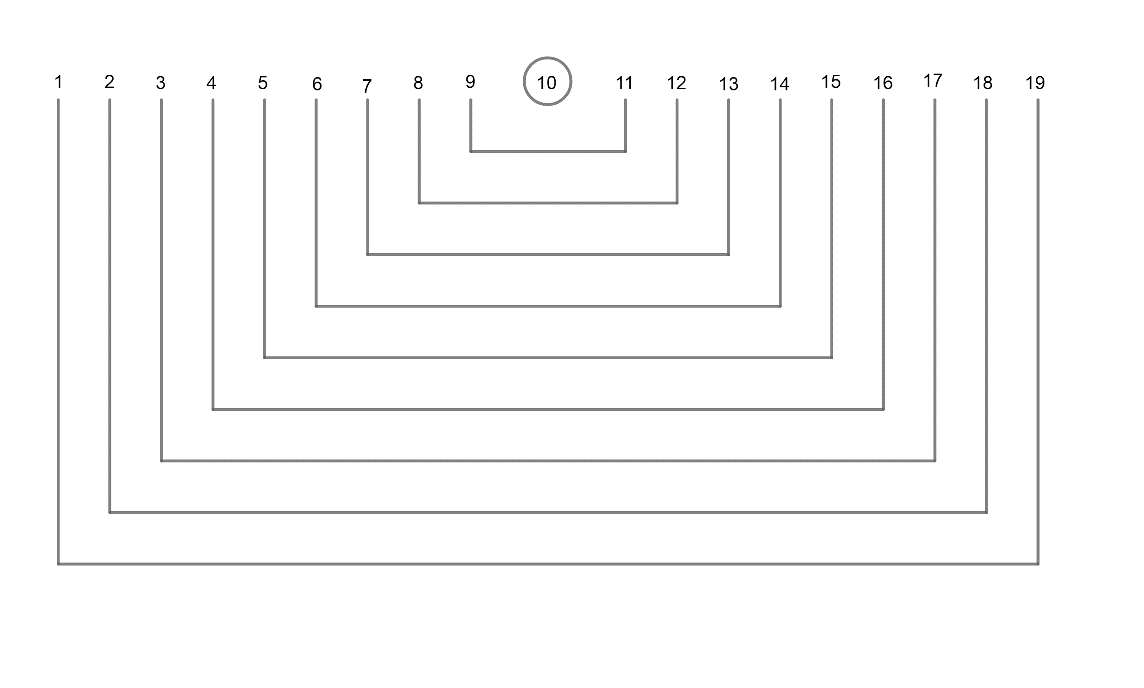
If x, y, z are three natural numbers in A.P. such that $x+y+z=30$ then the possible number of ordered triplet (x, y, z) is
A. 18
B. 19
C. 20
D. 21
Answer
606.9k+ views
Hint: Take the common difference as ‘d’. Substitute the values of x, y and z in the equation $x+y+z=30$. From the simplified equation, find the AP and substitute different values of d, which gives the total number of possibilities of ordered triplet.
Complete step-by-step answer:
It is said that x, y and z represent 3 natural numbers in AP.
AP represents Arithmetic progression. It is a sequence of numbers such that the difference between the consecutive terms is constant.
Difference here means the second minus the first term.
Let us consider ‘d’ as the common difference of the Arithmetic progression and ‘d’ is a natural number.
Here ‘x’ is the first term of AP.
y is the 2nd term of AP and ‘z’ the 3rd term.
Now, we need to find the difference between consecutive terms.
So, 2nd term – 1st term = d
$\Rightarrow y-x=d$
Rearrange the terms $x=y-d$.
Similarly, 3rd term – 2nd term = d.
$z-y=d\Rightarrow z=y+d$
Now, substitute the value of x and z in the equation $x+y+z=30$.
$\begin{align}
& \Rightarrow \left( y-d \right)+y+\left( y+d \right)=30 \\
& \Rightarrow y-d+y+y+d=30 \\
& \Rightarrow y+y+y=30 \\
& \Rightarrow 3y=30 \\
& \therefore y=\dfrac{30}{3}=10 \\
& \therefore x=y-d=10-d \\
& z=y+d=10+d \\
\end{align}$
$\therefore $ The AP of x, y, z is now equal to (10 – d), 10, (10 + d).
Now, let’s consider d =1, then AP becomes 9, 10, 11.
Similarly,
d = 2, AP = 8, 10, 12
d = 3, AP = 7, 10, 13
d = 4, AP = 6, 10, 14
d = 5, AP = 5, 10, 15
d = 6, AP = 4, 10, 16
d = 7, AP = 3, 10, 17
d = 8, AP = 2, 10, 18
d = 9, AP = 1, 10, 19
So these combinations of ordered triplets are possible.
i.e. now there are 9 possibilities which are the same for (19, 1), (18, 2)…..
$\therefore $ Number of possibilities $=9\times 2=18$ possibilities
Hence option A is the correct answer.
Note: The possibilities available can be represented as

Complete step-by-step answer:
It is said that x, y and z represent 3 natural numbers in AP.
AP represents Arithmetic progression. It is a sequence of numbers such that the difference between the consecutive terms is constant.
Difference here means the second minus the first term.
Let us consider ‘d’ as the common difference of the Arithmetic progression and ‘d’ is a natural number.
Here ‘x’ is the first term of AP.
y is the 2nd term of AP and ‘z’ the 3rd term.
Now, we need to find the difference between consecutive terms.
So, 2nd term – 1st term = d
$\Rightarrow y-x=d$
Rearrange the terms $x=y-d$.
Similarly, 3rd term – 2nd term = d.
$z-y=d\Rightarrow z=y+d$
Now, substitute the value of x and z in the equation $x+y+z=30$.
$\begin{align}
& \Rightarrow \left( y-d \right)+y+\left( y+d \right)=30 \\
& \Rightarrow y-d+y+y+d=30 \\
& \Rightarrow y+y+y=30 \\
& \Rightarrow 3y=30 \\
& \therefore y=\dfrac{30}{3}=10 \\
& \therefore x=y-d=10-d \\
& z=y+d=10+d \\
\end{align}$
$\therefore $ The AP of x, y, z is now equal to (10 – d), 10, (10 + d).
Now, let’s consider d =1, then AP becomes 9, 10, 11.
Similarly,
d = 2, AP = 8, 10, 12
d = 3, AP = 7, 10, 13
d = 4, AP = 6, 10, 14
d = 5, AP = 5, 10, 15
d = 6, AP = 4, 10, 16
d = 7, AP = 3, 10, 17
d = 8, AP = 2, 10, 18
d = 9, AP = 1, 10, 19
So these combinations of ordered triplets are possible.
i.e. now there are 9 possibilities which are the same for (19, 1), (18, 2)…..
$\therefore $ Number of possibilities $=9\times 2=18$ possibilities
Hence option A is the correct answer.
Note: The possibilities available can be represented as

Recently Updated Pages
Two men on either side of the cliff 90m height observe class 10 maths CBSE

What happens to glucose which enters nephron along class 10 biology CBSE

Cutting of the Chinese melon means A The business and class 10 social science CBSE

Write a dialogue with at least ten utterances between class 10 english CBSE

Show an aquatic food chain using the following organisms class 10 biology CBSE

A circle is inscribed in an equilateral triangle and class 10 maths CBSE

Trending doubts
Why is there a time difference of about 5 hours between class 10 social science CBSE

Write a letter to the principal requesting him to grant class 10 english CBSE

What is the median of the first 10 natural numbers class 10 maths CBSE

The Equation xxx + 2 is Satisfied when x is Equal to Class 10 Maths

Which of the following does not have a fundamental class 10 physics CBSE

State and prove converse of BPT Basic Proportionality class 10 maths CBSE




